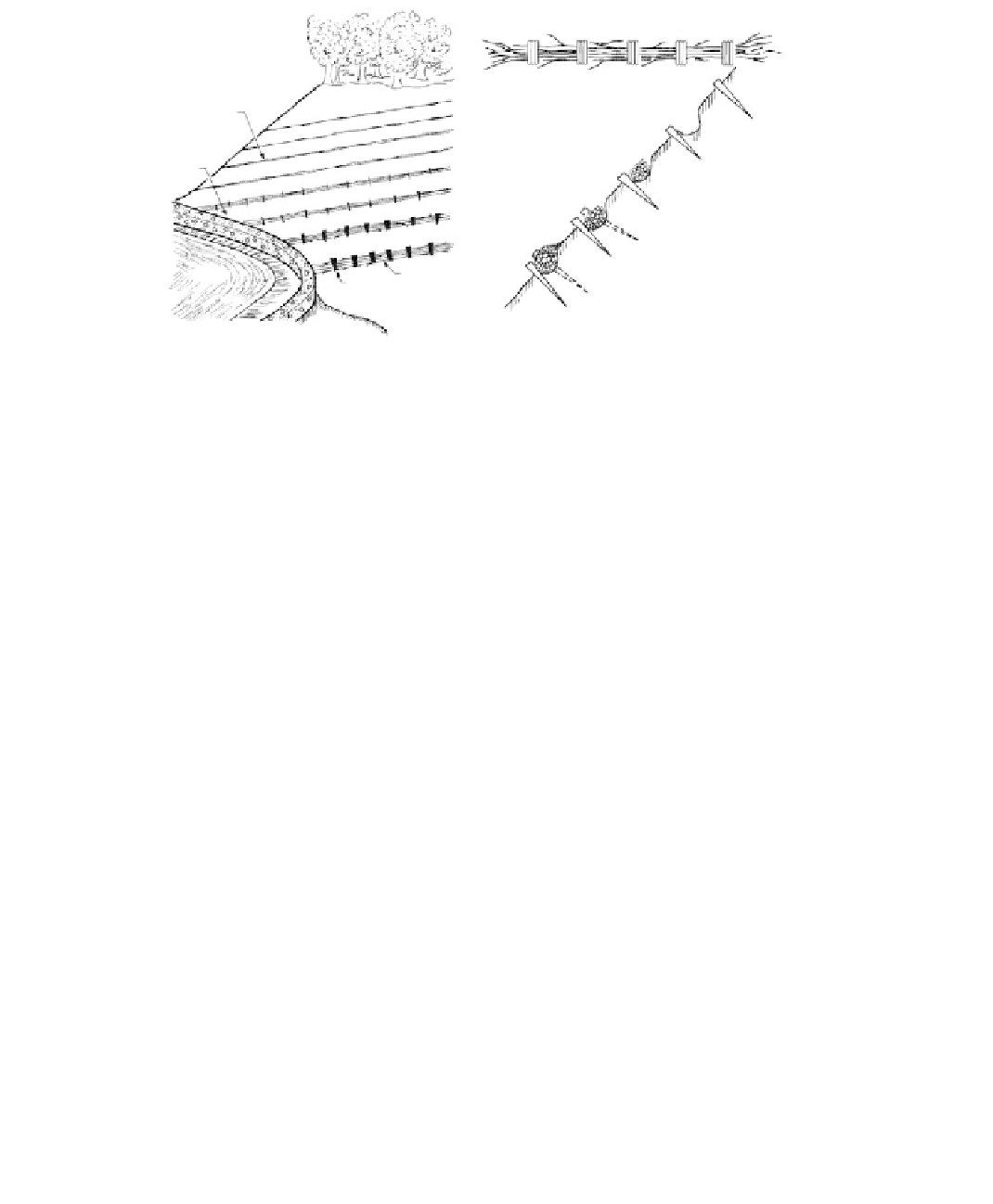Environmental Engineering Reference
In-Depth Information
Wattling bundle of live brush with butts
alternating 8-10 in dia., tied 12-15 in oc
Contoured
wattling
rows
1. Stake on
contour
Low
wall
2. Trench above stake
1/2 bundle diameter
3. place bundles
in trench
4. Add stakes through and
below bundles
Wattling
bundles
Road
Stakes
5. Cover wattling with soil
and tamp firmly
(a)
(b)
FIGURE 8.12
Erosion protection by installation of wattling bundles along contours of slope face: (a) contoured wattling on
slope face; (b) sequence of operations for installing wattling on slope face. Work starts at bottom of cut or fill
with each controur line proceeding from steps 1 through 5. Cigar-shaped bundles of live brush of species
which root are buried and staked along the slope. They eventually root and become part of the permanent
slope cover. (After Gray, D. H. et al.,
Civil Engineering,
1980. Adapted with the permission of the American
Society of Civil Engineers.)
8.2.3
Flooding
Causes
Natural floods
, occurring during or after heavy rainfall and snowmelt, cause runoff to
exceed the carrying capacity of the normal river channel, which consequently overflows
its banks and floods the adjacent valley. As natural events, floods can be predicted with
some degree of accuracy, but it is very often human activities that cause them to occur in
locations where they previously did not occur.
Human activities
of several kinds increase the incidence of flooding. Construction in the
river floodplain involving filling decreases the river's natural storage capacity, conse-
quently increasing the extent of the floodplain. Removal of vegetation from valley slopes
increases runoff volumes, and sedimentation from erosion reduces stream storage capac-
ity. Ground subsidence over large areas can result from the extraction of oil, gas, or water,
causing a general lowering of drainage basins (see
Section 10.2).
Sudden floods, with a dis-
astrous potential for destruction, result from the failures of dams.
Forecasting Flood Levels
General
The forecasting of flood levels is necessary for floodplain zoning, which imposes restric-
tions on the construction and design of flood-control systems such as dikes, upstream
holding reservoirs, channel straightening and lining, etc., and the design of culverts and
other drainage works. Emergency spillways for earth dams must be designed to prevent
overtopping, the most common cause of catastrophic failures of earthen embankments
(Sherard et al., 1963).
The objective of flood-level forecasting is to predict the quantity of flow and the level of
flooding that have a probability of occurring with a given frequency such as once in every

